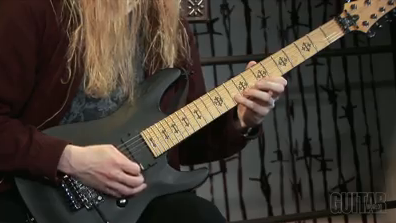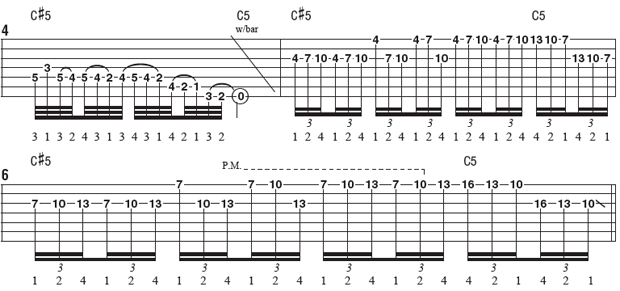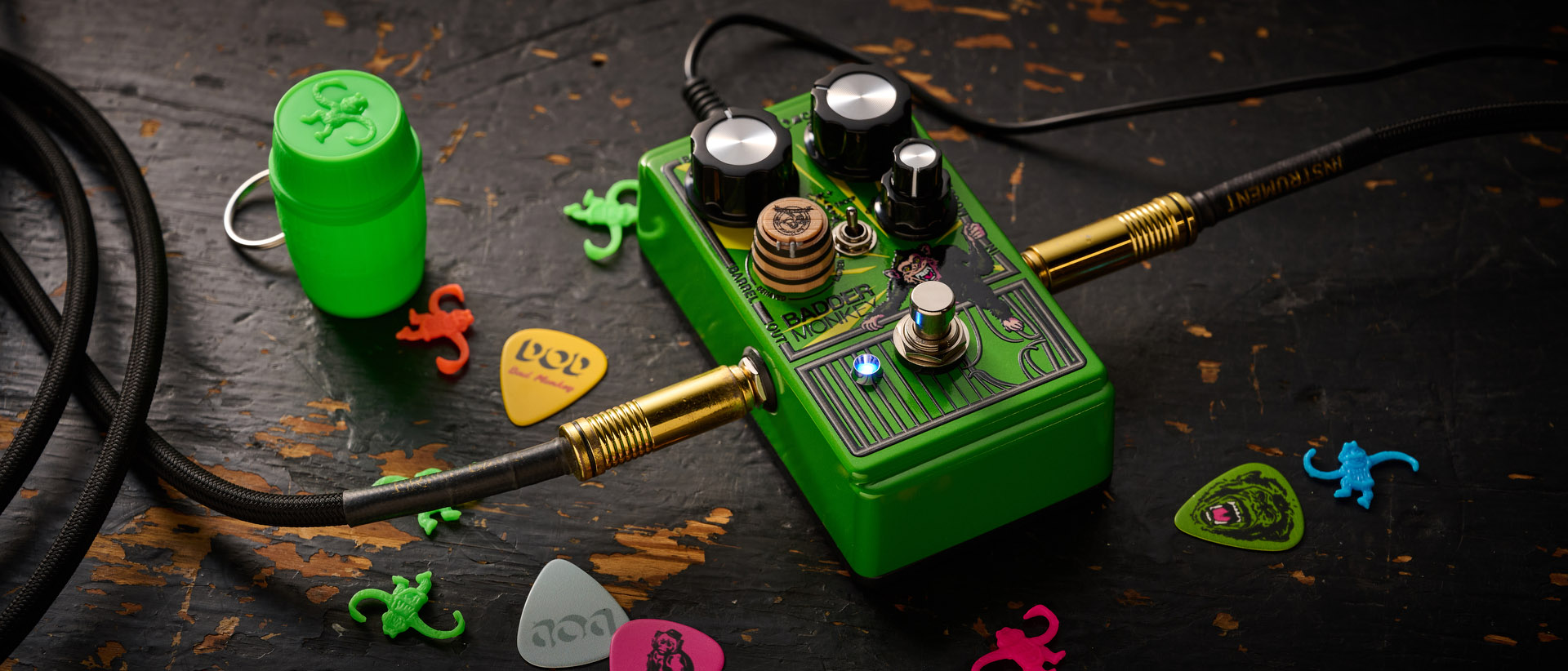Merchant of Menace with Jeff Loomis: Using the Phrygian-Dominant Scale and "The Obsidian Conspiracy" Guitar Solo, Part 1

In this month’s column, I’d like to initiate a detailed breakdown of the guitar solo on the title track from Nevermore’s latest album, The Obsidian Conspiracy.
This is a fairly complex solo, 14-bar bars in total length, so let’s begin with a look at the first six bars, including both the rhythm and lead guitar parts. The first six bars of the solo are played over a repeating one-bar rhythm guitar part, shown in FIGURE 1.
The tempo of the solo section is relatively slow, and this allows me the “space” to create a rhythm part that consists of a fairly complex syncopation based on 16th-note triplets. Using the seven-string guitar (tuned down one half step, low to high: Bb Eb Ab Db Gb Bb Eb), I play three-note root/fifth power chords on the bottom three strings.
The “home” chord (the tonal center, or tonic) is Cs5, fretted with the index finger on the seventh string’s second fret and the pinkie barred across the sixth and fifth strings at the fourth fret. The surrounding chords are fretted the same way.
I use alternate strumming throughout this rhythm part to attain an even attack, beginning with a downstroke, and palm-mute the strings to give the part a heavier, harder-driving sound. Palm muting also aids in creating a clearer distinction between each chord.
FIGURE 2 shows the first six bars of the solo. Bars 1-4 are based on the Cs Phrygian-dominant scale (Cs D Es F# G# A B), which is the fifth mode of F# harmonic minor (F# G# A B C# D E#). Phrygian-dominant is a favored scale in neo-classical rock because its structure offers a bittersweet contrast between the “sweetness” of the major third (E# in the key of C#) and the “darkness” of the flatted second, or flatted ninth, (D) and flatted sixth (A).
I’ve included my fret-hand fingerings throughout FIGURE 2 so you can see where I change from one position to another as I play through the solo. I begin in ninth position on B, the b7 (flat seventh), fretted with the pinkie. When I vibrato this note, I line up the ring, middle and index fingers behind the pinkie and shake the string with all four fingers for added support.
All the latest guitar news, interviews, lessons, reviews, deals and more, direct to your inbox!
At the end of the bar 1, I shift down to seventh position and rely on the first, third and fourth fingers to fret the notes in bar 2. During beat four of bar 2, I shift down one more fret to sixth position to play fast legato lines (lots of hammer-ons and pull-offs) that fall on beats one and two of bar 3.
In bar 3, at the end of beat two, the index finger shifts down to fourth position, wherein I execute the next series of hammers and pulls using the ring finger and pinkie.
The same position shifting technique occurs a few more times as the solo progresses. Bars 5 and 6 feature an ascending and descending B diminished seven arpeggio (B D F G#) played in a rhythm of 16th-note triplets, using string skipping and a wide fret-hand stretch. Notice that I use only the first, second and fourth fingers. Practice this part slowly at first, and make sure your fingers are warmed up before attempting it.
I’ll be back next month with part two of the “Obsidian Conspiracy” guitar solo.


